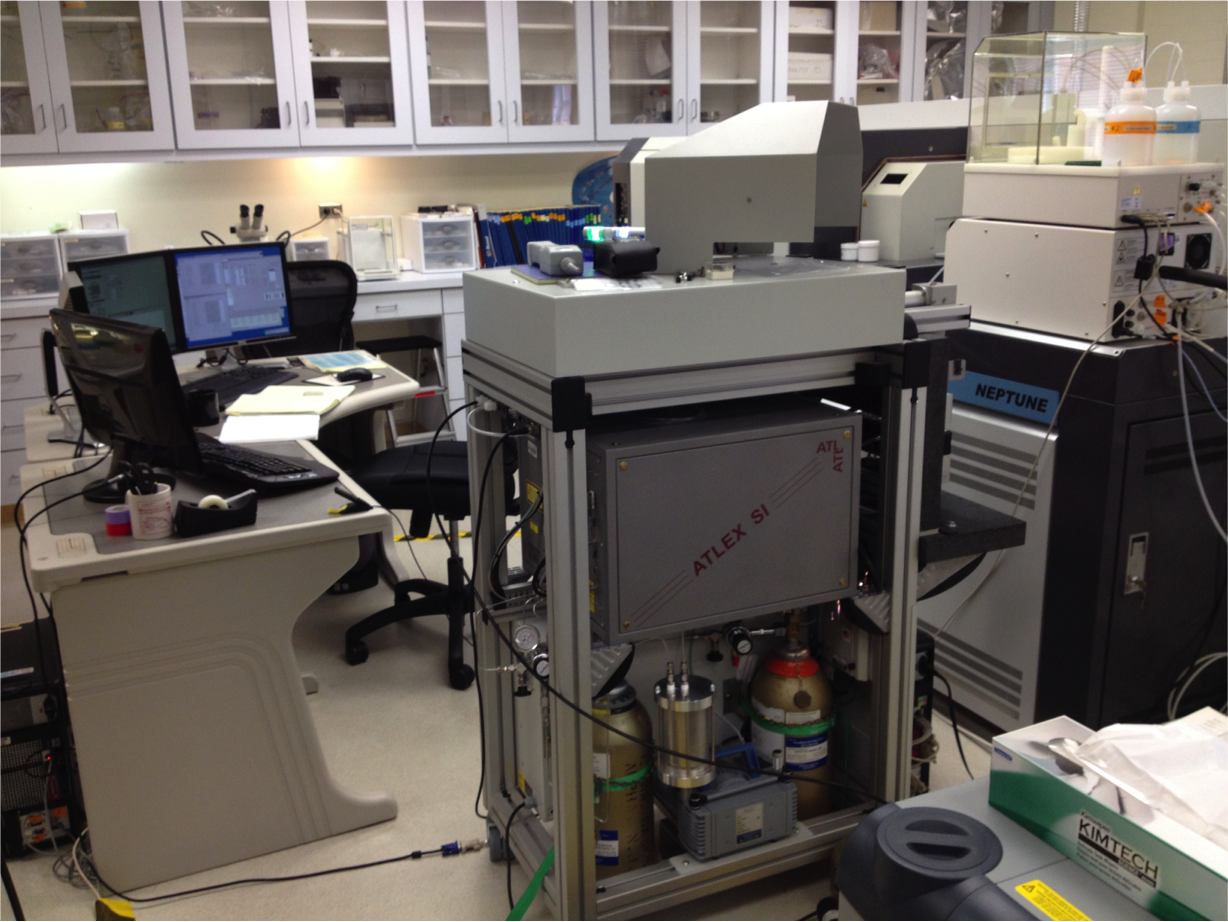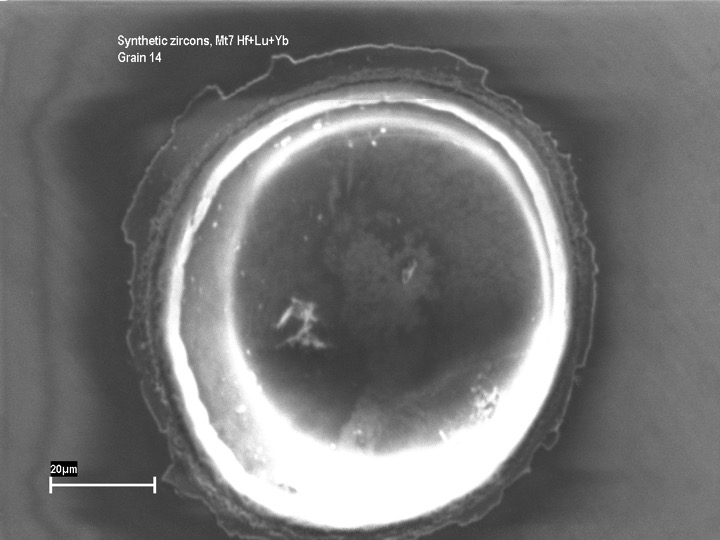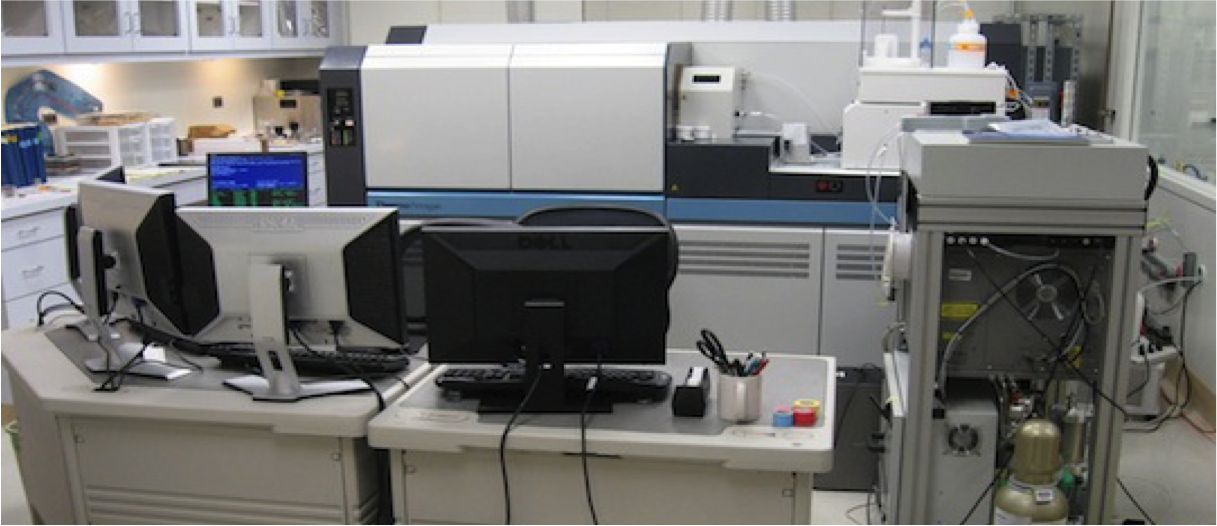MC-ICPMS Laboratory
Facility
The MC-ICPMS laboratory consists of a ThermoFinnigan Neptune mass spectrometer (MC-ICPMS), a 193 nm excimer last ablation system, and a Class 100 clean laboratory for wet chemistry. The Neptune was purchased with funds from NSF and UCLA. The laser system is an Analyte 193 “ultra-short” pulse excimer laser ablation system from Photon machines. The short pulse width of this laser provides the ability to ablate metals cleanly. The Neptune MC-ICPMS affords high mass resolving power (MRP) (~ 12,000 at 10% transmission) for multiple collection with 9 Faraday channels and a single ion counting channel with retardation filter. The high MRP is particularly useful for measuring Si and Fe stable isotope ratios where molecular interferences would otherwise be problematical. Movable cups provide flexibility in experiment design.

Pictured here is the 193 nm short-pulse excimer laser used for in-situ sampling and introduction into the MC-ICPMS instrument.
Applications
We use the 193 nm laser-ablation MC-ICPMS system for a variety of applications, including analysis of extraterrestrial materials and experimental run products. A typical laser ablation pit is shown in the image here.

Cosmochemists at UCLA recently used this instrument to redate the Moon at 4.51 Gyrs using Hf isotopes in combination with U-Pb dating of zircons (Barboni et al., 2017, Science Advances).
The MC-ICPMS laboratory is also central to our research on various stable isotope systems, including Si, Fe, Mg, and Ti, among others. See the applications page here.


